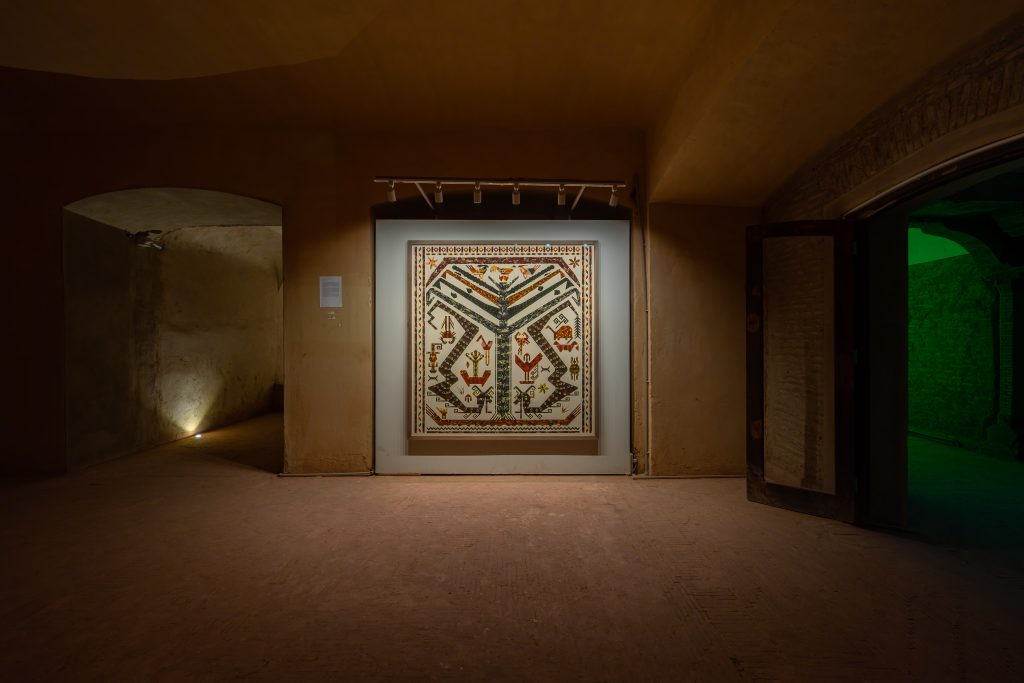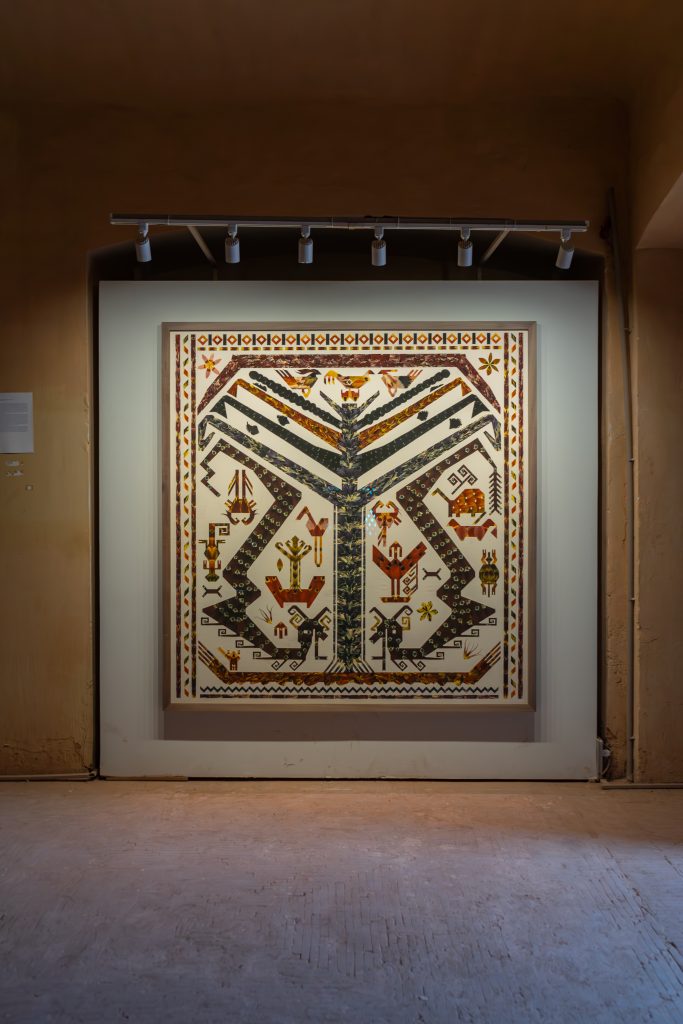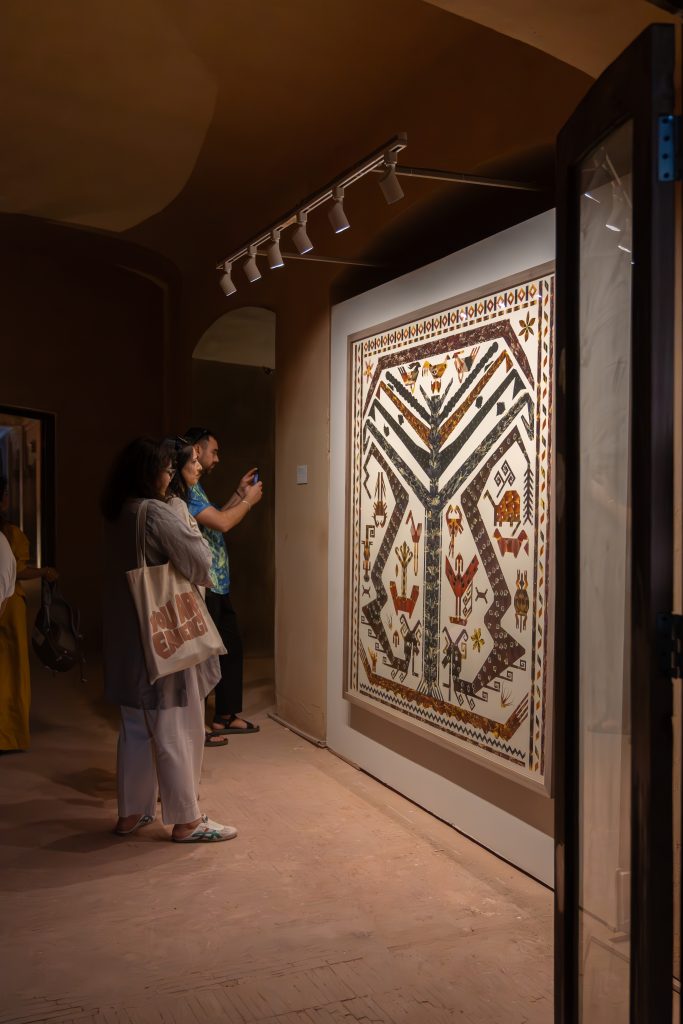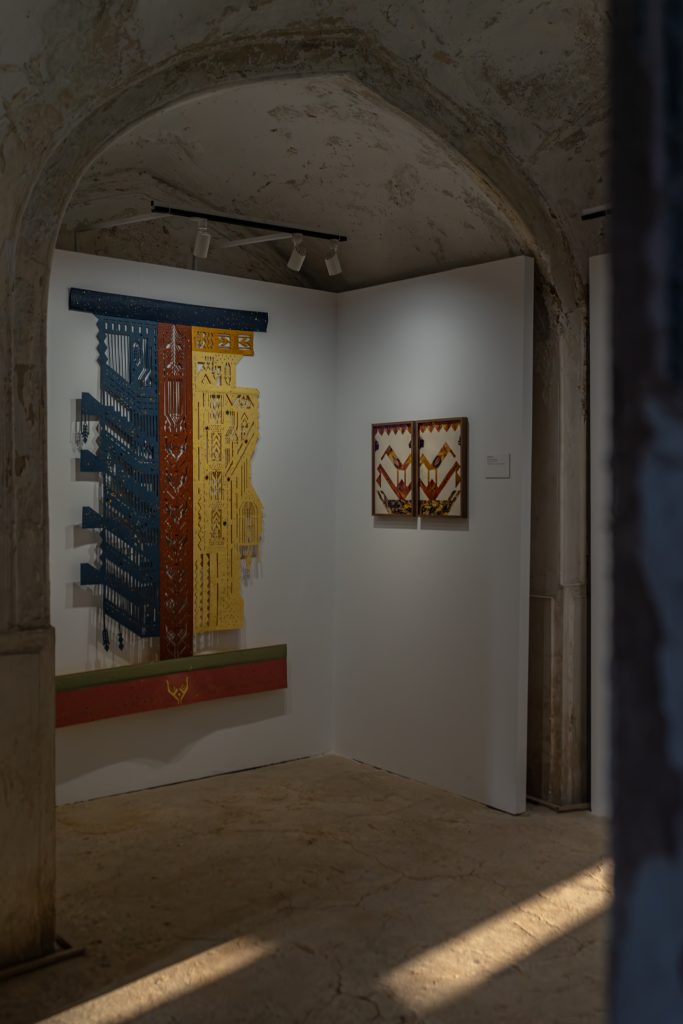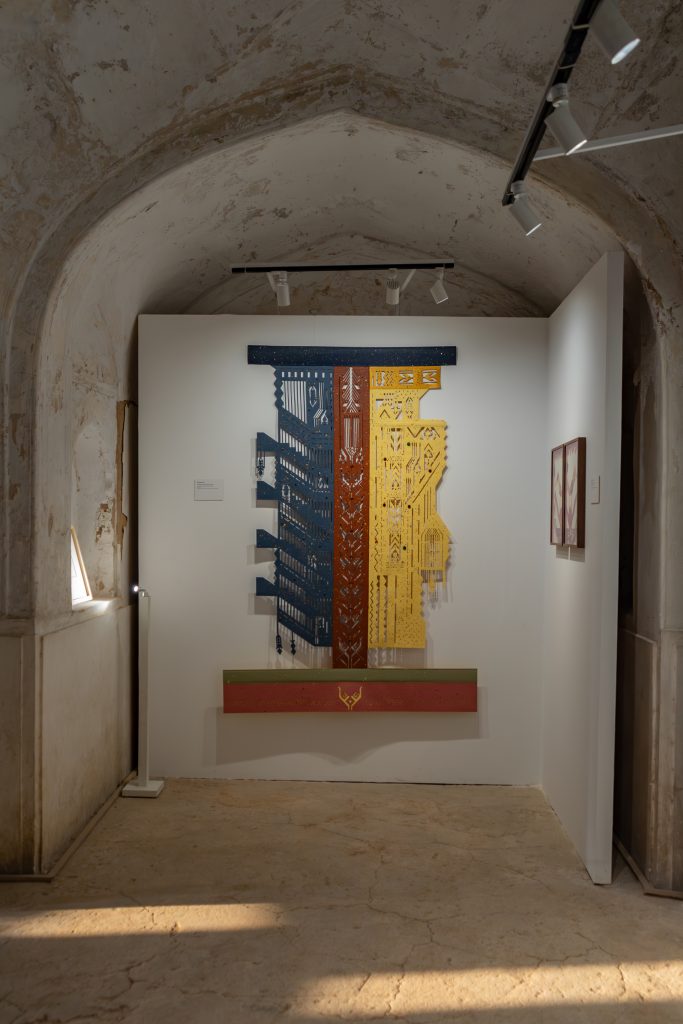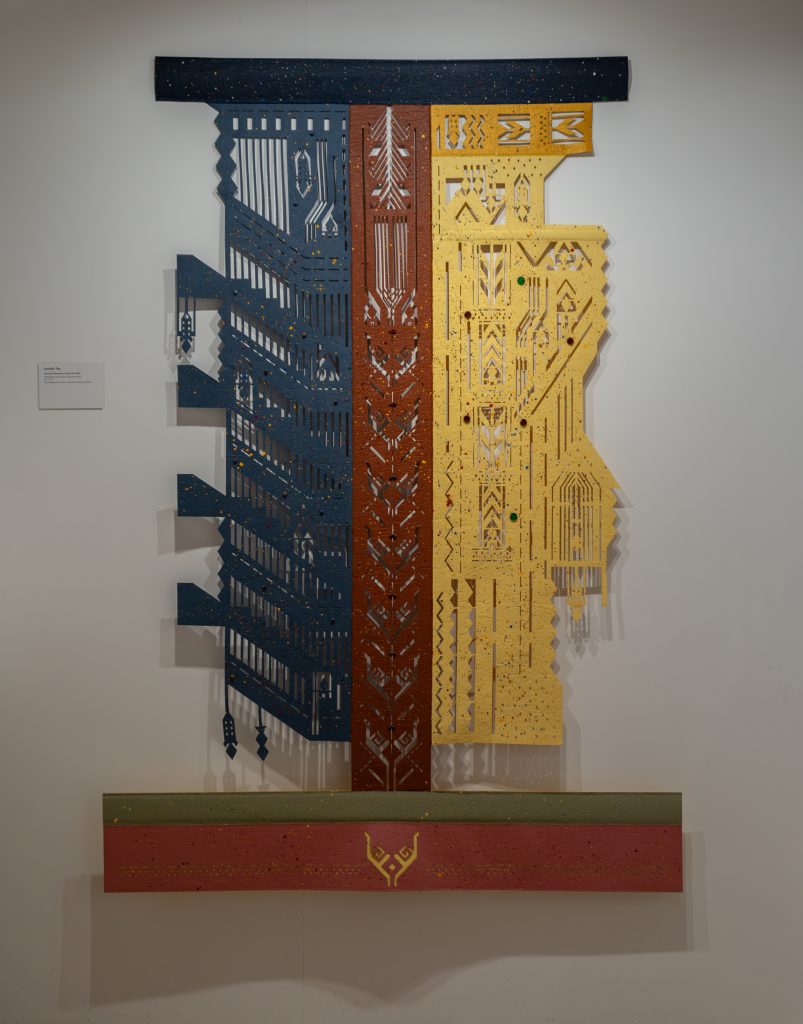Jennifer Tee
Tampan Tree of Life, Naga~Nagini, 2024
Tampan Song Birds, 2024
Ancestral Structure, Deep Life, 2024
Born in 1973 in Arnhem, Netherlands, Jennifer Tee produces work across a range of media, much of which deals with cross-cultural identity and narratives, inspired by her own family’s migration from Indonesia to the Netherlands in the 1950s. She frequently makes use of tulips, which, though now associated with the Netherlands, originated in Central Asia. She has had one-person exhibitions at the Stedelijk Museum, Art Space, Sydney, and Art Foundation Xiamen, and been part of the Istanbul Biennial, the Bienal de São Paolo, and “Indigo Waves and Other Stories” at SAVVY Contemporary and the Martin Gropius Bau.
For her first exhibition in Pakistan, Jennifer Tee selected two collages and a pineapple textile. Since 2017, Tee has made collages from tulip petals she gathers every spring, meticulously arranging thousands of pressed tulip petals into motifs taken from the tampan, woven squares that were exchanged during important rites of passage in the Lampung region of southern Sumatra, a crucial trade route since antiquity, which has long been a crossroads of cultures and artistic traditions. The predominant motif of these ‘ship cloths’ is that of the ship with a mast that often branches out into a tree of life – evocative of human souls continuing to new lives. The designs’ deeper meaning, the subject of migration, resonates with the artist’s own family history. In Tampan Tree of Life, Naga~Nagini, the tree mast branches into the naga, the mythological serpent deity with the power to create storms, rain, tempests, and cleave land from the sea. The Naga-Nagini took on different meanings as it traveled, mixing with different local folk traditions across Hindu and Buddhist cultures in South and Southeast Asia. Tampan Song Birds feature two avian creatures, which like ships are an emblem of migration.
Ancestral Structure, Deep Life is made of a sustainable textile created from pineapple leaves gathered in the Philippines, a process that extends the piña weaving tradition that dates back several centuries. The artist deems these creations “sessile beings,” which like trees are rooted in place. The life and structure of the title embrace not just humans, but also other creatures, in a family tree stretching back millions of years, a reminder of the cosmic time that all too often gets forgotten in the rush of everyday life.
Commissioned in 2024 by Lahore Biennale Foundation

